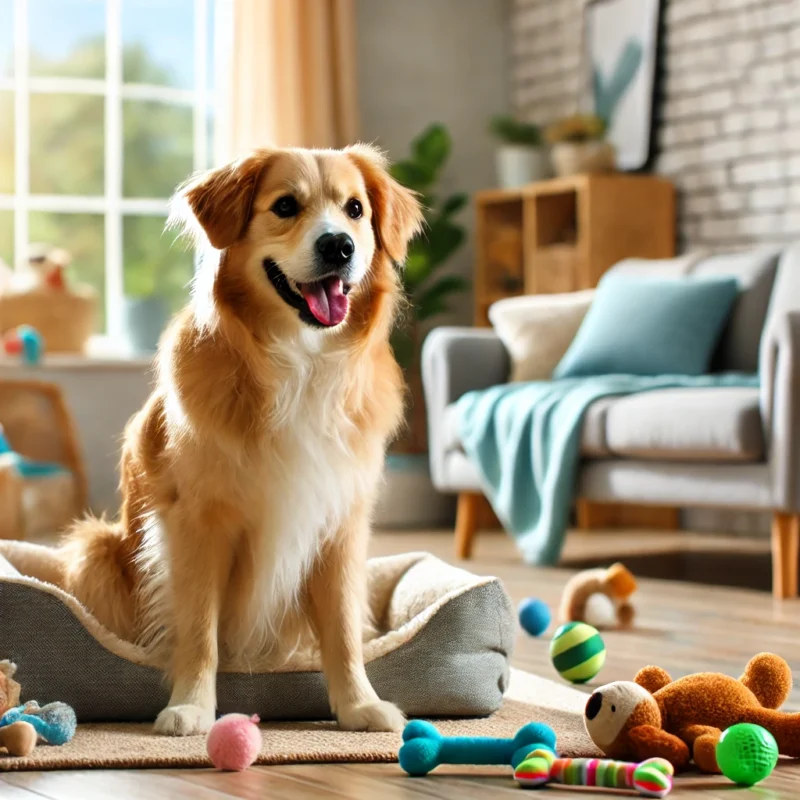Uncategorized
How to Reduce Separation Anxiety in Dogs
Separation anxiety in dogs is a common issue many pet owners face, characterized by a dog’s extreme distress when left alone. This condition, which can cause significant stress for both the dog and the owner, often manifests through behaviors like excessive barking, destructive actions, and attempts to escape. Fortunately, there are several effective strategies to help reduce separation anxiety in dogs.
Understanding Separation Anxiety in Dogs
Separation anxiety occurs when a dog becomes distressed upon being left alone. Common symptoms include:
- Excessive barking or howling
- Destructive behavior
- Pacing
- Drooling
- Attempts to escape
Understanding these symptoms is the first step in addressing the issue.
Gradual Desensitization
Gradual desensitization involves slowly acclimating your dog to being alone. Start with short periods and gradually increase the time apart.
- Step-by-step approach: Leave your dog alone for a few minutes, then gradually extend this time.
- Consistency: Maintain a consistent routine to help your dog feel secure.
Create a Safe Space
Creating a safe space for your dog can significantly reduce anxiety. This area should be comfortable and filled with familiar items.
- Comfortable bed: Use a cozy and comfortable dog bed like our Soft Sleeping Mat for Young Dogs.
- Favorite toys: Include favorite toys such as the Self-Rotating Interactive Toy for Cats.
Exercise and Mental Stimulation
Exercise and mental stimulation are crucial for a dog’s well-being. Tired dogs are less likely to experience separation anxiety.
- Daily walks: Ensure your dog gets daily walks and playtime.
- Interactive toys: Use interactive toys like the Dog Furry Splasher to keep your dog engaged.
Positive Reinforcement
Positive reinforcement helps your dog associate being alone with good experiences.
- Treats and rewards: Give your dog treats or toys when you leave.
- Training: Train your dog with commands and reward them for calm behavior.
Use of Calming Products
Calming products can help reduce anxiety in dogs.
- Calming collars and sprays: Use products that release calming pheromones.
- Comfort items: Provide items with your scent to comfort your dog.
Professional Help
In severe cases, seeking professional help may be necessary.
- Veterinarians: Consult a veterinarian for advice and possible medication.
- Dog trainers: Professional dog trainers can offer tailored strategies.
Consistent Routine
Maintaining a consistent routine helps your dog know what to expect, reducing anxiety.
- Regular schedule: Feed, walk, and play with your dog at the same times each day.
- Pre-departure cues: Avoid making a big deal out of leaving or returning home.
Crate Training
Crate training can provide a sense of security for your dog.
- Introduce the crate: Make the crate a positive space with treats and toys.
- Gradual use: Start with short periods in the crate and gradually increase.
Medication and Natural Remedies
In some cases, medication or natural remedies may be needed.
- Medication: Consult your vet about medications that can help.
- Natural remedies: Consider natural remedies like CBD oil or calming supplements.
Distraction Techniques
Distracting your dog can prevent them from becoming anxious.
- Kong toys: Fill Kong toys with treats to keep your dog busy.
- Puzzle feeders: Use puzzle feeders to challenge your dog mentally.
Training and Socialization
Training and socialization can help your dog feel more secure.
- Obedience training: Teach basic commands to improve your dog’s confidence.
- Socialization: Expose your dog to different environments and people.
Conclusion
Reducing separation anxiety in dogs involves a combination of strategies. By understanding the issue and implementing these techniques on how to reduce separation anxiety in dogs, you can help your pet feel more comfortable when left alone. Remember, every dog is different, so be patient and persistent.
References
- Sherman, B. L., & Mills, D. S. (2008). Canine Anxieties and Phobias: An Update on Separation Anxiety and Noise Aversions. Veterinary Clinics: Small Animal Practice, 38(5), 1081-1106.
- Blackwell, E. J., Bradshaw, J. W., & Casey, R. A. (2016). Fear responses to noises in domestic dogs: Prevalence, risk factors, and co-occurrence with other fear related behavior. Applied Animal Behaviour Science, 171, 152-160.
- Tiira, K., & Lohi, H. (2015). Early Life Experiences and Exercise Associate with Canine Anxieties. PLOS ONE, 10(11), e0141907.
- Landsberg, G. M., Hunthausen, W. L., & Ackerman, L. J. (2011). Behavior Problems of the Dog and Cat. Elsevier Health Sciences.
- King, J. N., Simpson, B. S., Overall, K. L., Appleby, D., Pageat, P., Ross, C., … & Fatjó, J. (2000). Treatment of separation anxiety in dogs with clomipramine: results from a prospective, randomized, double-blind, placebo-controlled, parallel-group, multicenter clinical trial. Applied Animal Behaviour Science, 67(4), 255-275.


